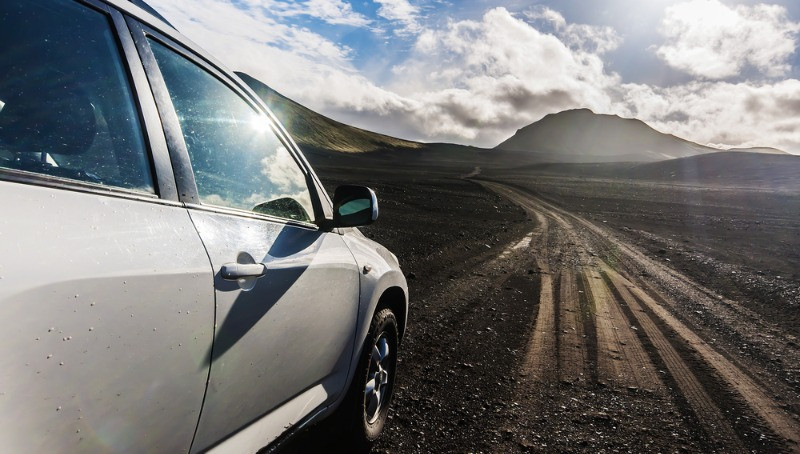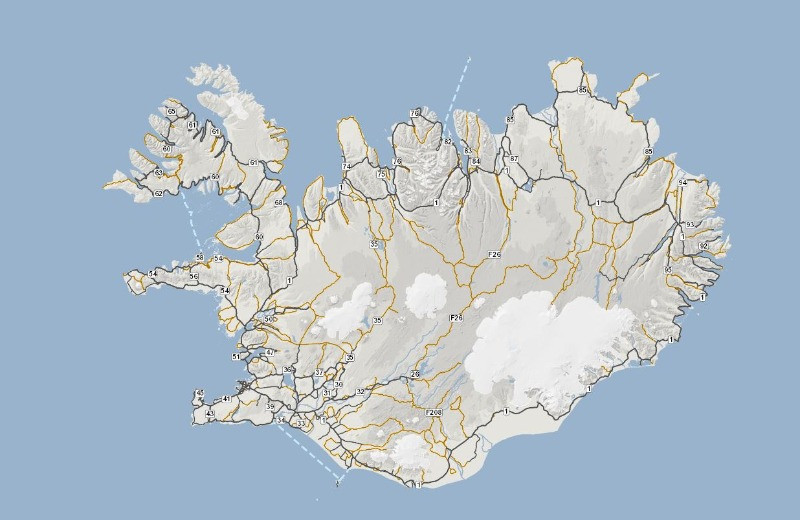Are you planning your next trip to Iceland?
If you want to enjoy nature at its best, then visiting Iceland is the way to go. It’s like the country is specially built for road trips. Whether you intend to go on a rural trip or you just want to enjoy the spectacular landscapes, this country is all built for it. However, one tiny drawback of this is that you definitely can’t help but drive across Iceland’s many gravel roads.
Every now and then when traveling around Iceland, you will come across gravel roads which can be very challenging even for the most experienced drivers. These roads are not smooth and comfortable paved roads like the asphalt roads that you are more likely used to in your home country.
If you did decide to bring your car or you decided to rent a car in Reykjavik, there is some important information that is specially designed by the Iceland Road Administration that can help road users drive safer considering Iceland's ever-changing weather conditions and changing scenery.
So, if you are set on your Icelandic road trip here is some important information to keep you on the good side of the law when driving on gravel roads in Iceland.
Maximum Speed On Roads in Iceland
Driving around the ring road in Iceland is a wonderful way to have a total feel of what nature has to offer. Most people traveling around Iceland for the first time are fascinated by the island's beautiful coastal and natural wonders stretching all around the country.
And for your information, you wouldn’t want to speed in Iceland! To start with, there are speed cameras everywhere. If the speed camera that is stationed almost on all roads gets a snapshot of your car plate number for speeding, your speeding ticket could go to $1000 US dollars depending on the speed you are driving at. The speed limit on the main ring road route and most of the main roads in Iceland which probably is considered the fastest speed limit is 90 kilometers per hour which are about 55 miles per hour. And this by all means is not very fast at all.
In Iceland, to reduce road accidents, drivers and passengers are required by law to wear seatbelts and keep to road speed limits. Irrespective of the sort of vehicle you are driving. According to an investigation by the Icelandic Road Administration; the causes of road accidents have shown that a large number of those that lost their lives were drivers that breached the speed limits and were not using their seat belts.
Over speeding is one of the major causes of road accidents in Iceland. The accidents are not mostly caused by the road conditions or the weather conditions but by the excessive speed of the drivers. When you are driving at top speed, it reduces reaction time and makes it almost impossible to control the vehicle on any Icelandic roads.
Therefore, once your rental car agency gives you the go-ahead to use the vehicle, it is important that you observe the general speed limit. Also, in Iceland, there are different types of roads and the speed limit changes depending on the road you are driving on.
Traveling around Iceland can be fun! And there are times you might be tempted to hit on the accelerator because you really want to get to the next place in a hurry or you just want to speed because nobody is watching. Although, you might not likely encounter road Marshalls on most of these roads, however, be certain that there are speed cameras somewhere nearby to take photos of your license plate. Just be prepared to pay an additional fee to your car rental company as a fine for violating the Iceland speed limit.
How Fast Can I Go with My Vehicle in Iceland
Driving in urban areas requires you to keep to 50 km/h, while 80 km/h is mandatory for gravel roads and 90 km/h on asphalt. Also, while driving, it is important to keep watch and pay close attention to the different road signs stationed all across the roads which might be telling you what speed your vehicle should keep or the sort of difficult road terrain you will encounter. This is why it’s important to keep to a safe speed according to the time and condition while on the wheel.

These are the maximum limits set by the Iceland authorities. However, it doesn’t necessarily mean these limits are the right speed to keep in some cases.
The right speed is the one that gives you complete control of the vehicle under any circumstances. It is the one that is most suitable for the road and weather conditions. If you are driving on gravel roads, especially in rural areas, you need to really slow down or else, you might have pebbles flying off into your windshield and leaving a crack which is not what you want. The repair can cause additional charges on your credit card when you returned the vehicle to the car rental agency.
Also, if you are plying Iceland's rural areas, you might likely encounter a flock of sheep, ducks, and probably some cows on the roads (very common scenery in Iceland's rural areas) so driving with speed caution can save the day.
So now that we have the basic sketch of what speed limits are like in Iceland, you, therefore, need to stay focused on your wheel, and DON’T speed!
Is Insurance Necessary For Gravel Roads In Iceland?
Renting a car in Iceland requires that you obtain an insurance policy and besides it is against the law to drive without having it. This is to ensure that you are protected against many hazardous driving conditions including the most popular gravel road mishaps in Iceland. Among many countries in the world, Iceland has one of the most confusing and expensive arrays of insurance options for car rentals. Also, be aware that vehicle repairs in Iceland are usually very expensive so taking insurance especially when you will be traveling on gravel roads is worth considering.
Where are the gravel roads in Iceland?
Many sections of the ring road are gravel roads which are about 1.332 kilometers - i.e. 20% kilometers of gravel roads. This is excluding all the highland roads and secondary country roads.
Many of these gravel roads are still in good shape however some of them are already in deplorable condition with rocks already sticking out. So if you want to travel around Iceland using the ring road, you need to consider gravel protection insurance and if you intend to take the F- roads, then it is 100% highly recommended to take the insurance.
No matter how carefully you drive on the highland roads, they are bound to cause some serious damage to your car. In fact, many will recommend you take full insurance when driving the F-roads.
At times, just a tiny piece of loose gravel can cause serious damage to the vehicle, and some other times, you may drive on many gravel roads and no single damage will occur. This is just how it is.
More reason why when asked this question I highly recommend you take the gravel protection cover even when driving in winter.
Iceland Gravel Road Map
When driving in Iceland, you will likely come across many types of roads including the popular gravel road that leads to many of the country's breathtaking landscapes. The highland roads are rough terrains across mountains, usually very narrow, and go through many unbridged rivers which demand that you drive with caution when passing through these areas.
 Credit to vegagerdin.is - Gravel Roads in yellow
Credit to vegagerdin.is - Gravel Roads in yellow
The Skógafoss waterfalls, Dyrhólaey, and the Jökulsárlón glacier lagoon including Seljalandsfoss are some of the popular tourist destinations and can be found along the Ring Road.
If you are driving to the rugged and beautiful F roads in the highlands of Iceland here is some more information that may come in handy:
The F roads in the highlands of Iceland
This highland has one or more of the following landscapes:
White glaciers, green mountain tops, black sands, blue or brown rivers, colorful hot springs, rock formations of different varieties, small waterfalls, big waterfalls, and black volcanoes to name a few.
These highlands are situated right at the center of the country, above 400-500 meters above sea level, and are mostly uninhabitable. You can locate many of the glaciers here including the Vatnajokull glacier, the biggest glacier in Europe. And most of the volcanoes which are still very active can be found here as well.
The mountain road also known as the F-roads and are indicated with an ‘F’ on Iceland maps, will need a 4x4 vehicle to drive on such roads. You can use a smaller car to go through the Kjalvegur road 35 which is a popular road among Icelanders - although, this actually depends on the road condition. But right after road 35 (which leads to Gullfoss), you will need a bigger car like the 4x4 to ply the mountain road thereafter.
Most of the F roads are narrow roads that have no bridge over rivers and therefore you need to drive cautiously along these routes. If you use your common sense, you shouldn’t have problems driving on Iceland gravel roads. And most importantly, before leaving home for your trip around the country, make sure you check the forecast and road conditions several times a day. There are websites that give you this information and are well updated and are accessible 24 hours with just a click of your mouse. Having foreknowledge of what to encounter on the road will save you some embarrassing road situations.
So, have fun while in Iceland!


 By
By


